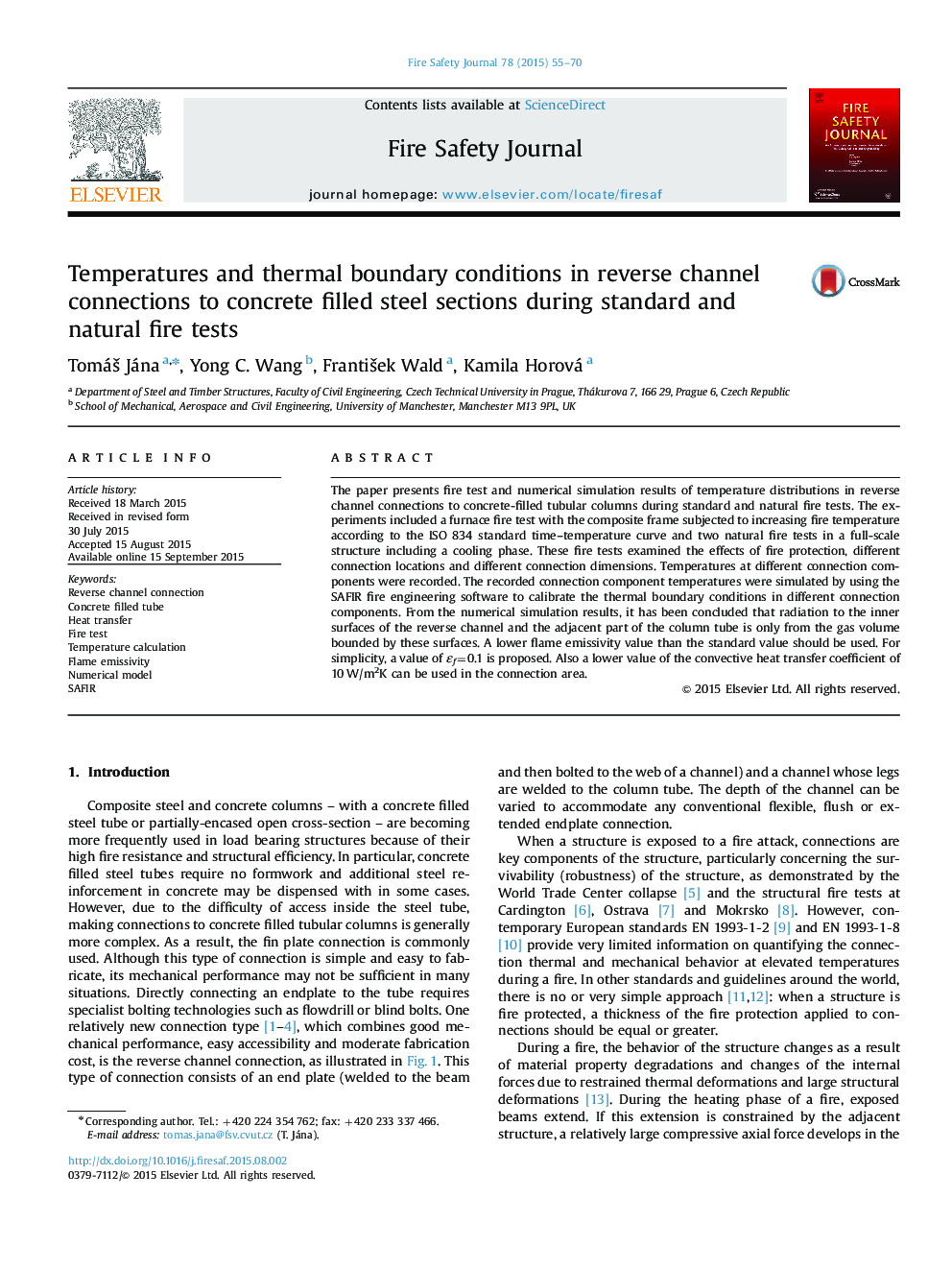| کد مقاله | کد نشریه | سال انتشار | مقاله انگلیسی | نسخه تمام متن |
|---|---|---|---|---|
| 269730 | 504698 | 2015 | 16 صفحه PDF | دانلود رایگان |
• Temperature of bolts, end plate and reverse channel may be considered as uniform.
• Temperature of column tube and adjacent welds is influenced by column concrete core.
• Gas volume enclosed by reverse channel surface is used to calculate gas emissivity.
• For simplicity, proposed gas emissivity for connection inner surfaces is εf=0.1.
• Convective heat transfer coefficient of 10 W/m2K can be used in connection area.
The paper presents fire test and numerical simulation results of temperature distributions in reverse channel connections to concrete-filled tubular columns during standard and natural fire tests. The experiments included a furnace fire test with the composite frame subjected to increasing fire temperature according to the ISO 834 standard time–temperature curve and two natural fire tests in a full-scale structure including a cooling phase. These fire tests examined the effects of fire protection, different connection locations and different connection dimensions. Temperatures at different connection components were recorded. The recorded connection component temperatures were simulated by using the SAFIR fire engineering software to calibrate the thermal boundary conditions in different connection components. From the numerical simulation results, it has been concluded that radiation to the inner surfaces of the reverse channel and the adjacent part of the column tube is only from the gas volume bounded by these surfaces. A lower flame emissivity value than the standard value should be used. For simplicity, a value of εf=0.1 is proposed. Also a lower value of the convective heat transfer coefficient of 10 W/m2K can be used in the connection area.
Journal: Fire Safety Journal - Volume 78, November 2015, Pages 55–70
